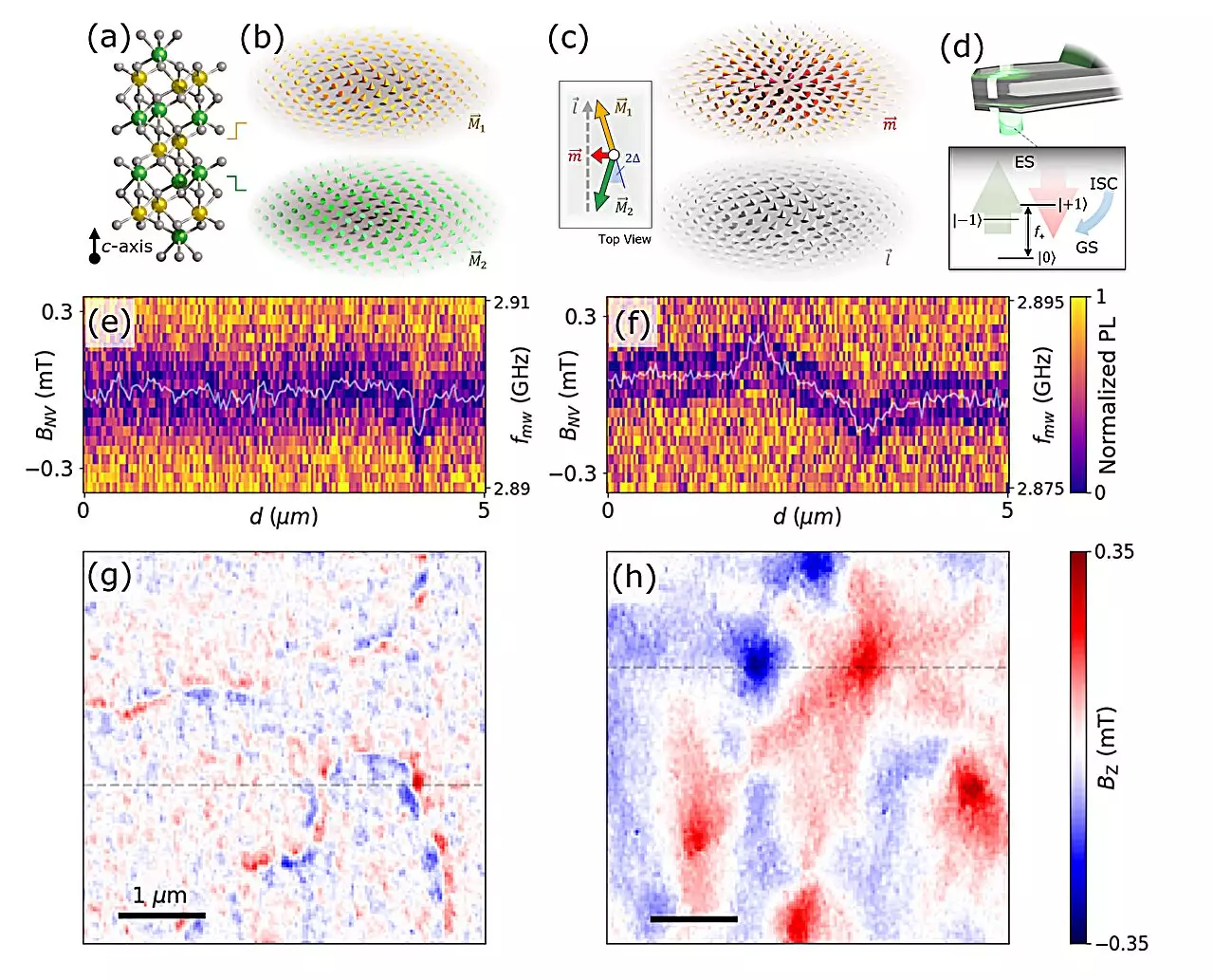Researchers at the University of Cambridge have made a groundbreaking discovery in the field of magnetism by identifying isolated magnetic charges, known as magnetic monopoles, in a material closely related to rust. This breakthrough has the potential to revolutionize computing technologies, enabling greener and faster logic and memory applications.
Unveiling Hidden Swirling Textures
The research team utilized the technique of diamond quantum sensing to detect and observe swirling textures and faint magnetic signals on the surface of hematite, a type of iron oxide. Through this technique, they were able to identify the emergence of magnetic monopoles in hematite, which occur through the collective behavior of many spins.
Emergent Monopoles and Their Behavior
The observed magnetic monopoles in hematite were found to glide across the swirling textures on its surface, resembling tiny hockey pucks of magnetic charge. This experimental observation of naturally occurring emergent monopoles is a significant milestone in the field. The research has also revealed a direct connection between the swirling textures and the magnetic charges of materials like hematite, suggesting a hidden code linking them together.
Challenging Maxwell’s Equations
According to James Clerk Maxwell’s equations, magnetic objects, including everyday magnets or the Earth itself, are believed to always exist as a pair of magnetic poles that cannot be isolated. However, the discovery of magnetic monopoles challenges this fundamental understanding. Professor Mete Atatüre, the leader of the research team and Head of Cambridge’s Cavendish Laboratory, remarks that if monopoles did exist and were successfully isolated, it would be akin to finding a missing puzzle piece.
While scientists have previously suggested the theoretical possibility of monopoles in magnetic materials, the research team adopted an alternative strategy to explore their existence. By harnessing the concept of emergence, they were able to uncover monopoles spread over two-dimensional space, observed to glide across the swirling textures on the surface of a magnetic material.
To study the behavior of antiferromagnets, a type of material with more stable swirling topological textures, the researchers employed diamond quantum magnetometry. This technique utilizes a single spin, specifically the inherent angular momentum of an electron within a diamond needle, to accurately measure the magnetic field on the surface of the material under investigation without interfering with its properties.
In the current study, the team focused on hematite, an antiferromagnetic iron oxide material. Employing diamond quantum magnetometry, they made surprising revelations, uncovering hidden patterns of magnetic charges within hematite, including monopoles, dipoles, and quadrupoles. This experimental observation of a two-dimensional monopole in a naturally occurring magnet is an unprecedented finding.
The Potential of Diamond Quantum Magnetometry
The study not only demonstrates the ability of diamond quantum magnetometry to unravel the enigmatic behavior of magnetism in two-dimensional quantum materials but also highlights its capability to uncover and investigate previously unknown magnetic phenomena. The researchers emphasize the potential of this technique in opening new avenues of study in the field of quantum materials.
The Implications for Computing Technology
If controlled and harnessed, the swirling textures adorned with magnetic charges discovered in hematite could power super-fast and energy-efficient computer memory logic. This breakthrough holds immense significance for the development of next-generation computing technologies that could potentially revolutionize the industry.
The discovery of magnetic monopoles in a material closely related to rust is a groundbreaking achievement in the field of magnetism. By unveiling the hidden swirling textures and establishing a direct link between these textures and magnetic charges, researchers have laid the groundwork for the development of greener and faster computing technologies. The utilization of diamond quantum magnetometry has proved instrumental in uncovering and investigating hidden magnetic phenomena. With further advancements in this field, the potential for super-fast and energy-efficient computer memory logic powered by these swirling textures is within reach.



Leave a Reply